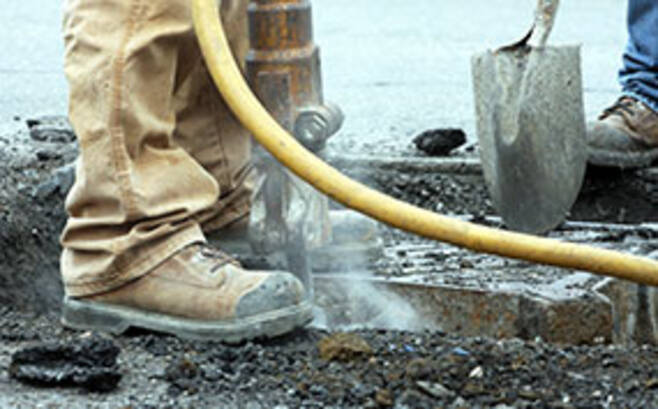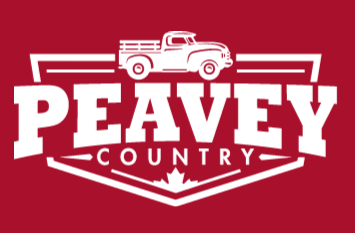Choosing the Right Work Boot
Written by: Helen McMenamin
From Fall 2018 issue of Connected to the Land
What you need to know:
1. Protect from the elements you encounter every day, don’t just opt for an All-In-One boot.
2. When trying on new boots, bring your work socks so you know exactly how it will fit.
3. Socks do matter and opting for a more expensive but durable socks will save your feet & increase the lifespan of your boot.
4. Research the materials used in the boots to help increase their lifespan & longevity. Your work boots are as important as any other part of your work gear.
You wear them 10 or 12 hours or more every day. The right boots for your feet and your environment can help you stay alert and avoid hazards as well as keeping your feet, knees and hips aligned for the long haul.
“Once you’ve had good footwear, you have higher standards. You appreciate the fit, the comfort and fitness for purpose of good boots or shoes and you won’t accept anything less. You won’t go back.” That’s the word from Dan MacIntosh, a 40-year veteran of work boot sales.

His advice for shopping for work or casual footwear is to look first for protection from the elements you encounter in your work or recreation activities. Whether it’s cold or wet conditions, chemicals, electrical or other workplace hazards, there are boots for all situations.
Knowing the level of protection, you need for the weather and work hazards you can narrow the range of boots that might work for you. Then, look for fit, comfort and quality. Budget is important but choosing boots by price can be false economy. Some people say “steel-toed boots,” when they mean boots to protect against crush injuries. Steel toes are generally heavy and may be tiring. Some manufacturers offer alloy toe protection, which is lighter, and composite toe covers which are lighter yet and generally more comfortable. Composites are warmer in winter and cooler in summer, but they are bulkier.
For additional protection, metatarsal guards cover the entire front of your foot from falling objects or embers. Kevlar fiber uppers and laces are great for working around open flames or welding embers. Even traditional leather can be more abrasion resistant with treatments like Tough-Tec.
Slip resistance is one of the most important aspects about your work boots – trips, slips and falls are among the most common work injuries. Rubber is naturally gripping, but TPU (thermoplastic polyurethane) usually lasts longer and is more heat and chemical resistant.
TIRED FEET? TIME TO SHOP
Go shopping late in the day. Feet are a little bigger then, especially if you spend a lot of time on your feet. Wear or bring your regular work socks, so you’ll have room for your socks. Put on both boots and walk around the store in them. There should be room to wiggle your toes with about half an inch (12.5 mm) to the end of the boot. Oversize boots increase the risk of tripping, but don’t count on tight boots stretching enough to be comfortable. Try on boots in the next width or length or from different manufacturers to find the most comfortable boots for you. Every manufacturer has their own last – the form the boot is built on – so each brand’s boots can fit differently.
“Boots should feel comfortable from the moment you put them on,” says Julie Crawford of Ariat. Work boots are a new line for the company, but it has proved itself since it began producing performance equestrian boots 25 years ago and then turned to western boots and clothing. “Boots are the best investment you can put on your body,” says Crawford. ”They’ll help you work every day in all conditions.”
BOOT LIFESPAN
Boot construction affects the support boots can give you and their longevity. A thin rubber or synthetic outsole and a light, cushioning EVA (ethylene-vinyl acetate, a rubber-like material) midsole cemented directly to the upper allows for the lightest type of work boot, whether or not they have protective toecaps. They are the most affordable type but they’re not the most durable.
For heavier work conditions, midsoles can be injected or molded into outsoles. Boots with this construction are sturdier and the sole is less likely to separate from the upper than the lighter EVA midsole type.
For heavy-duty safety boots, Goodyear welting is the strongest, most durable construction system. The outsole is stitched to the upper with an extra strip of leather or synthetic material. The extra labour and materials makes these boots heavier and more costly but they last longer than lighter, more flexible boots. They are tough and supportive, and they can be repaired.
SOCKS MATTER TOO
Socks can make a world of difference to your comfort. You can buy tube socks so cheap you can treat them as disposable, but there are advantages to high-end socks – especially for work.
Choose socks for your boot height to keep the cuffs from rubbing on your legs or ankles. Thicker socks give more cushioning and more warmth. They can also help roomy boots fit better. If you are expending lots of energy, medium weight socks can be most comfortable. Don’t look at the price first, look at the fabric content. Each type has pros and cons. Most socks are made of a blend of fabrics to combine the advantages of each.
Cotton is the least cost option and works fine if you’re not on your feet much but cotton soaks up perspiration. Combining wet skin and friction leads to blisters. Damp socks and winter are a miserable combination and even in summer cotton socks can bunch up in your boots.
Merino wool, sometimes called Smartwool, is the most recommended sock material – once you’ve overcome the sticker shock. It’s naturally cushioning, comfortable year-round, doesn’t itch, keeps your feet dry and is naturally antimicrobial so it retains smells less. Athletes often choose pure merino socks but blends with a high percentage of merino wool can be a great choice for durable comfort and performance.
Acrylic is a versatile material that dries fast and gives good cushioning. It has some of the advantages of merino but costs less. Polyester insulates, wicks moisture and dries quickly. It blends well with wool for a good combination of warmth, comfort, durability and fast drying. Nylon adds durability and strength to blends, but too much can be sweaty. Small amounts, 2 to 5%, of Elastane, Spandex or Lycra are added to other fabrics so socks fit and stay in place.
Socks should fit snugly but not cramp your toes or leave wrinkles. The heel and arch areas should be snug and in the right places. Seams should be flat and not rub. Cushioning, especially under the ball of your foot and heel, adds comfort.









